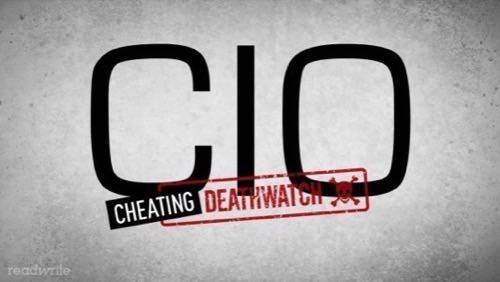
The ReadWrite DeathWatch is known for serving up plenty of doom, gloom and grumpiness. But for the Holiday Season, we’re taking a slightly different tack – highlighting companies, technologies and perspectives that have managed to cheat death. That are surviving even after many observers wrote them off.
Ed Robben’s LinkedIn Profile page lists his title as “SVP & CIO, Fossil.” The irony of that title isn’t lost on the latest wave of doomsayers predicting the end of the CIO.
In January, retailer J. C. Penney named Kristen Blum its new CTO. At the same time, they let Robben – their CIO – go. The newly rebranded JCP was too small for two sheriffs, and the CTO was running the show.

Did that send a bigger message to the technology world? A message that the CIO – as we understood the role – was a dying breed?
Plenty of people seem to think so.
At a September event in Sydney, a Forrester Research analyst described the CIO position as “potentially under threat”. A different analyst at the same event called out the emerging Chief Mobility Officer (not to be confused with a Chief Marketing Officer) as one of the primary usurpers. The logic behind that assertion, it seems, is that CIOs are traditionally PC-focused, while CMOs are gaining power with the rising tide of mobile devices in the enterprise. A report by Getronics claimed the real threat comes from increasingly tech-savvy CFOs.
It’s like an episode of Spy vs. Spy with less exciting weapons.
Alphabet Soup
There’s no shortage of theories about who’s gunning for the CIO, but they all miss the point. Yes, the CIO’s role is changing, but so is everyone else’s. Marketing is buying software. CFOs are shifting from purchases to subscriptions. It’s a wacky world out there, to be sure, but the CIO still has plenty to do – and a lot of value to bring to the party.
The biggest danger to the CIO is tying the position’s definition to the devices, rather than the responsibilities. Once upon a time, the CIO kept the mainframes running and – in a very literal sense – “kept the lights on” in the datacenter. These days, many of those services are being pushed to the cloud. If you view the CIO as the person in charge of making sure someone reboots the servers on schedule, she’s obsolete. If the CIO is the person who keeps mission-critical technology running smoothly at the best possible cost – while grabbing opportunities for innovation and competitive advantage, she’s still an invaluable asset.
Businesses play fast and loose with C-level titles all the time, particularly when technology is involved. Before taking the CTO position at JCP, Kristen Blum held CIO titles at PepsiCo and Abercrombie & Fitch. And in her spare time? According to J.C. Penney, “She is a member of the National Retail Federation’s CIO Council and a Governing Body Member of the CIO Summit, among other leadership roles in CIO-focused organizations.”
CIO vs. CTO
So what’s the difference, anyway? It depends on the organization. Traditionally, most businesses view the CIO as a cost center, charged with maintaining system reliability. While the CTO is seen as a potential revenue center, building new technologies.
In some companies (for example, software outfits), the delineation between the two jobs and the skill-sets required of them is fairly clear: IT versus product development. In other companies, much of the development may be internally focused, and internal and external systems may be intimately connected, blurring the lines.
In those cases, businesses may find a single chief executive managing technology can be more efficient. That’s likely what happened at J. C. Penney. We’ll probably see a lot more consolidation in 2013, but businesses could just as easily call their surviving executives CIOs and have the same outcome. After all, Kristen Bum is Kristen Blum, regardless of her title.
Chief Accountability Officer?
Whatever the letters, one thing that won’t change is the CIO’s most basic function. One man who’s been both a CIO and CTO described it this way: “I don’t care what you call me. I’m still the guy with his ass on the line when something breaks. Someone needs to take responsibility for whatever systems you’re using, and it’s sure as hell not going to be the Marketing guy.”
That’s exactly right. The CMO may become the new technology customer, but someone else needs to be responsible for oversight, integration, performance monitoring, compliance auditing and other technological evaluations – all functions that are squarely in the wheelhouse of the CIO.
The CIO function will continue to evolve, and we’ll probably see a reduction in line-of-business CIOs as platform consolidation occurs, but the job isn’t going anywhere.
To see more ReadWrite DeathWatches, check out the ReadWrite DeathWatch Series, which collects them all, the most recent first.





















